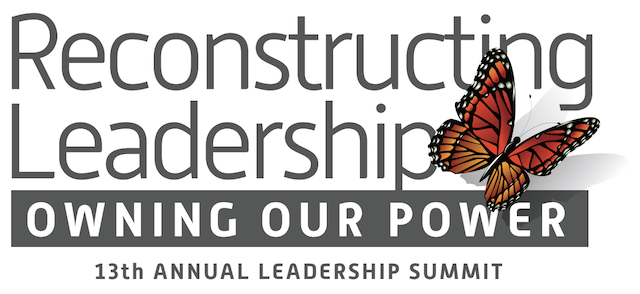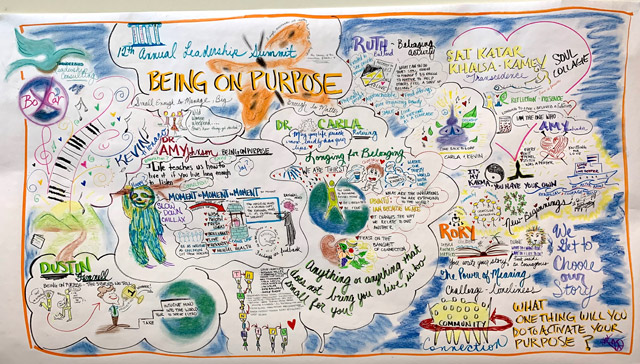Should I Stay or Should I Go?
I’ve got the Clash’s earworm stuck in my head.
Should I stay or should I go
If I go there will be trouble
And if I stay it will be double
So come on and let me know
This indecision’s bugging me
If you don’t want me, set me free
Exactly who am I’m supposed to be[1]
One of the hardest decisions we have to make is whether to stay in a job that is not satisfactory or whether to move on. How do you decide? What factors make a difference. Where do you begin?
There are a few core factors that must be considered:
- Financial security – this may determine when and how you leave, but should not determine if you leave (based on other factors below). We hear people talk about golden handcuffs – making so much, healthcare, pension, stock options, vacation time, standard of living, retirement benefits, etc. — that as miserable as the job is, it feels impossible to leave.
- Health – the job is making you sick physically or emotionally
- If you are suffering from physical or emotional illnesses – stomach ulcers, migraines, depression, anxiety
- If it is impacting your relationships with those closest to you
- If you are not willing to address your health concerns because your job is too demanding…
- You have tried to address the concerns but the cure is worse than the disease…
- Ethics – the position requires you to do things that are illegal, unethical and/or against your value system.
You do not want to end up in bankruptcy or out of your home or car. However, staying in a job that causes you to compromise your values or your health is generally not recommended. This is a case of how and when you leave, not if you leave.
In preparing for this article, I explored numerous quizzes about whether to stay or go and all of them reinforced that if your health and ethics are compromised, you need to get out! Ideally, you do so by finding a new job first. In the meantime, you can evaluate your life choices so that the financial consequences are manageable during the transition or if you find a better position that pays less.
What are other factors that suggest it is time to move on?
A number of years ago I participated in training to facilitate the Everything DiSCä assessment. At the time, I had a great team, was doing some exciting work and was very energized. However, we had a new senior executive who was making some changes to what and how the division was working. On page six of the report, I read about what motivates and stresses people with my DiSCä style[2]. It was amazingly accurate and told me a lot about my work situation. With the new changes being implemented, I was losing all the things that motivated me and beginning to experience all the things that stressed me. It wasn’t even close. Our new senior executive’s vision and mine were not aligned at all. I sat down with my boss and asked him if there was light at the end of the tunnel, if he thought things would improve in the future. He honestly told me that he did not.
If you are not feeling fulfilled it may be time to move on.
One of the recurring themes in positive psychology asserts that when we are able to employ those things we do best at work, we are more productive and effective. Clifton et. al.[3] explains it this way, “A talent is a naturally recurring pattern of thought, feeling, or behavior that can be productively applied…They are among the most real and most authentic aspects of your personhood…There is a direct connection between your talents and your achievements. Your talents empower you.” Using our talents, developed through skill and knowledge application, provide us with a sense of fulfillment and satisfaction in our work.
One of the 12 questions that Gallup[4] poses to quantify employee engagement is, “I get to do what I do best every day at work.” So, one of the critical aspects of whether you stay or go is are you doing not just what you are good at, but what fulfills you and empowers you; what gives you energy rather than draining you. Gallup research indicates that only one third of workers are engaged at work overall. And yet, there are companies that seek to have 90%+ engaged workers…folks who truly care about what they are doing, provide discretionary effort and are committed to quality. Wouldn’t it be wonderful to be in a work environment where everyone felt that way?
Most of us have to do mundane, routine or annoying tasks at work, but these should be counter-balanced by those that replenish us, provide us with meaning and satisfaction. When I looked at my motivator/stressor dichotomy, I could see that my future with the company would restrict those behaviors and activities that energized me.
Are you experiencing an unhealthy amount of stress?
Some stress is considered good for us. It keeps us on our toes, on edge, working a little harder, with a little more urgency. However, if the stress you are experiencing is soul crushing, maybe it is time to go.
If your values are being compromised, if you are being asked to do something unethical or illegal, this is a no-brainer.
Additional stressors tend to come from the work environment, often shaped by your supervisor/manager/boss. We’ve read many places that people quit bosses not jobs. Scott Mautz[5] identifies five indicators that it might be time to go.
- Your boss makes you feel like you’re shrinking.
- Your boss makes you feel like your values are being compromised.
- Your boss gives oversight, not oxygen.
- Your boss causes you to question yourself more than your situation.
- Your boss’s own career isn’t exactly going well.
Can you see how disempowering these behaviors are? What happens here is that as you buy in to your boss’s negativity, it may make it even harder for you to consider leaving. Who would want you after all? It is important to know that you do not have to live in this type of work environment, although many of us believe this is just what bosses do.
Most people are not negatively impacted by working hard if the support and appreciation are there. It is the emotional toll of negativity, lack of recognition, respect and trust that cause long-term stress and harm. Employees who experience these behaviors try to stay under the radar, live in fear (stress, pain anxiety) and perform only adequately.
In my work in leadership and coaching, we spend a lot of time on effective people-management. The most successful companies understand that performance excellence comes from excellent management – supporting and growing people, not squelching them. Find those people and be one!
Are there opportunities to grow in your current situation?
Another consideration is aspirational. What do you want to be doing in a few years? Where do you want to be? Does your current environment provide you with opportunities to grow? This doesn’t necessarily mean moving up. Some people are seeking advancement and want to be sure there are promotion opportunities in the future. Others find meaning and satisfaction where they are. This does not mean that nothing should change. Even in a situation where you do not want to change jobs, there should be opportunities to learn more, to dig deeper and to become more skilled at what you are doing.
Daniel Pink[6] identifies three elements that provide motivation and satisfaction for people: mastery, purpose and autonomy. Are you given opportunities to develop and improve, to master the skills related to your work? Learning new skills and/or having new projects and responsibilities are powerful energizers, even if your position hasn’t changed. Do you have the ability to make decisions within your area of expertise (autonomy)? Does your work have meaning (purpose)?
And of course, there is the desire to advance. How possible is it? Is the organization providing you with the training opportunities you need? Is there a track record of hiring from the inside? Does your supervisor know you want to move up? Is there a leadership program you can participate in? Can you find a mentor? Have you applied for new positions and not succeeded? What have you learned?
In some organizations, even when opportunities exist, they may not be available to you if your boss doesn’t support participation. That is another indicator that something may need to change.
So how do you know when it is time to go?
We’ve all heard the fable/myth[7] about putting frogs in water and heating it up versus putting them in boiling water. If the water is boiling we know to jump out. But what about when the water is warm, warmer, etc., how do you know when it is too hot? How do you know when the physical, emotional and career costs outweigh the benefits of stability and golden handcuffs?
At this point, you’ve considered your health, your engagement and your career potential where you are. If it is still tolerable, what will let you know it is time to jump? Chip and Dan Heath[8] suggest setting a trip wire, some kind of indicator that will let you stop and pause. I’ve often recommended people set a date on the calendar – maybe six months from now – and invite them to rethink their decision based on the factors that are of concern. Other trip wires would be: applying for advancement and not succeeding (repeatedly, with no helpful feedback), having projects taken away, being uninvited to meetings, a poor performance review, increased health issues or on the positive side, being asked to take on something new, getting good feedback or recognition, discovering you do feel happier and more satisfied at work.
And in the meantime, it never hurts to freshen up your resume and dip your toe in the water to see what else is out there. Network, check the want-ads, apply for a few positions (good practice), and talk to trusted friends and colleagues. [9]
Our work takes up a huge amount of our lives and contributes to our sense of self-worth and identity. No matter what we are doing, we can find meaning and satisfaction that adds value to our life. As Rumi says,
Everyone has been made for some particular work, and the desire for that work has been put in every heart.
Don’t be satisfied with stories, how things have gone with others. Unfold your own myth.
____________________________
[1] Downloaded 8/12/19 Source: LyricFind, Songwriters: Joe Strummer / Mick Jones, Should I Stay or Should I Go lyrics © Universal Music Publishing Group
[2] For more information about DiSCä, contact us at Thunderbird Leadership Consulting.
[3] Clifton et. al. (2001) StrengthsQuest: Discover and Develop Your Strengths in Academics, Career, and Beyond. New York: Gallup Press.
[4] Forbringer, L. (2002) Overview of the Gallup Organization’s Q-12 Survey. O.E. Solutions, Inc.
[5] Mautz, Scott. (Aug. 3, 2019) If Your Boss Does these 5 Things, It’s Time to Quit, According to Science. The Inc. Life.
[6] Pink, Daniel. (2011) Drive: The Surprising Truth about What Motivates Us. New York: Riverhead Books.
[7] James Fallows discredits this fable as pure myth when it comes to frogs…our challenge is, is it true for humans? Fallows, J. (Sept. 16, 2006) The Boiled Frog Myth: Stop the Lying Now! The Atlantic.
[8] Heath, C. and Heath, D. (2014) Decisive: How to Make Better Decisions. The Crown Publishing Group, Kindle Edition
[9] Reddit has a helpful article about preparing if you are resigning or are asked to leave.
https://www.reddit.com/r/personalfinance/comments/6g146m/be_prepared_if_youre_resigning_or_quitting_have/









